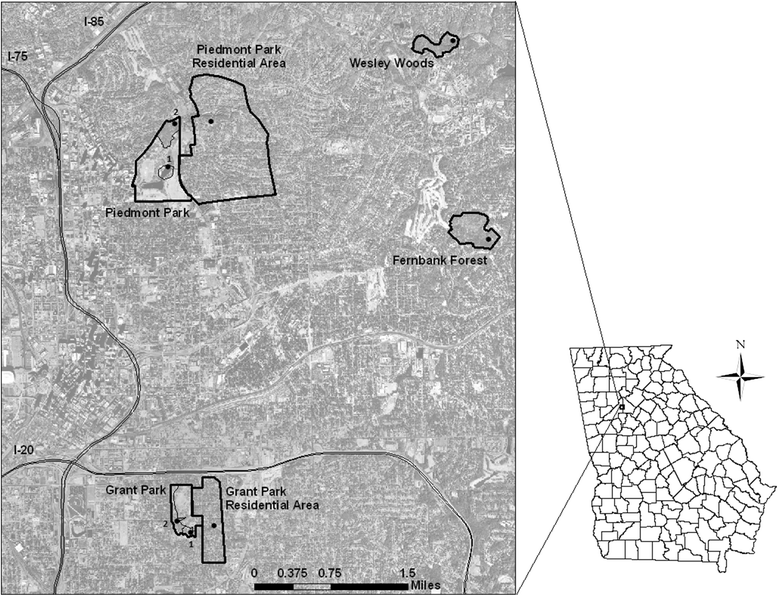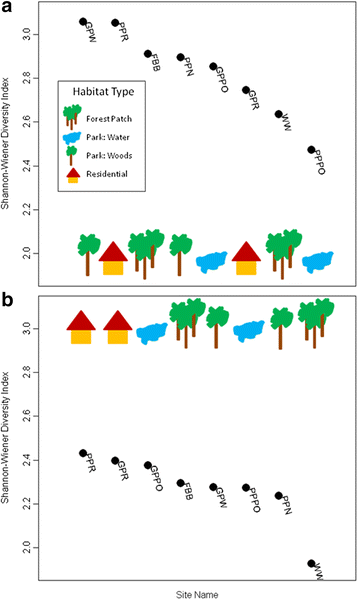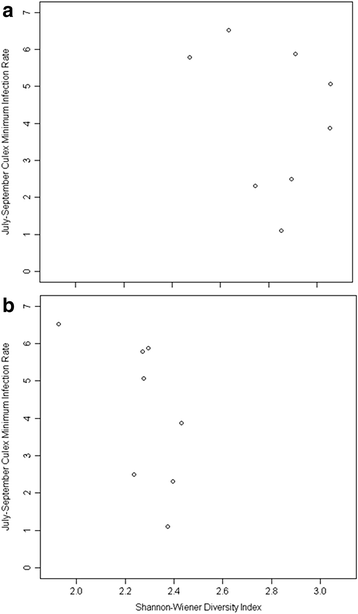Avian species diversity and transmission of West Nile virus in Atlanta, Georgia
- PMID: 28159002
- PMCID: PMC5291963
- DOI: 10.1186/s13071-017-1999-6
Avian species diversity and transmission of West Nile virus in Atlanta, Georgia
Abstract
Background: The dilution effect is the reduction in vector-borne pathogen transmission associated with the presence of diverse potential host species, some of which are incompetent. It is popularized as the notion that increased biodiversity leads to decreased rates of disease. West Nile virus (WNV) is an endemic mosquito-borne virus in the United States that is maintained in a zoonotic cycle involving various avian host species. In Atlanta, Georgia, substantial WNV presence in the vector and host species has not translated into a high number of human cases.
Methods: To determine whether a dilution effect was contributing to this reduced transmission, we characterized the host species community composition and performed WNV surveillance of hosts and vectors in urban Atlanta between 2010 and 2011. We tested the relationship between host diversity and both host seroprevalence and vector infection rates using a negative binomial generalized linear mixed model.
Results: Regardless of how we measured host diversity or whether we considered host seroprevalence and vector infection rates as predictor variables or outcome variables, we did not detect a dilution effect. Rather, we detected an amplification effect, in which increased host diversity resulted in increased seroprevalence or infection rates; this is the first empirical evidence for this effect in a mosquito-borne system.
Conclusions: We suggest that this effect may be driven by an over-abundance of moderately- to poorly-competent host species, such as northern cardinals and members of the Mimid family, which cause optimal hosts to become rarer and present primarily in species-rich areas. Our results support the notion that dilution or amplification effects depend more on the identities of the species comprising the host community than on the absolute diversity of hosts.
Keywords: Amplification; Community composition; Dilution effect; Host competence; Northern cardinal; West Nile virus.
Figures




References
-
- WHO. Manual of environmental management for mosquito control with special emphasis on malaria vectors. Geneva, Switzerland; 1982. http://apps.who.int/iris/bitstream/10665/37329/1/9241700661_eng.pdf. - PubMed
-
- Chernin E. Interference with the capacity of Schistosoma mansoni miracidia to infect the molluscan host. J Parasitol. 1968;54:509–16. - PubMed
Publication types
MeSH terms
Grants and funding
LinkOut - more resources
Full Text Sources
Other Literature Sources
Medical

